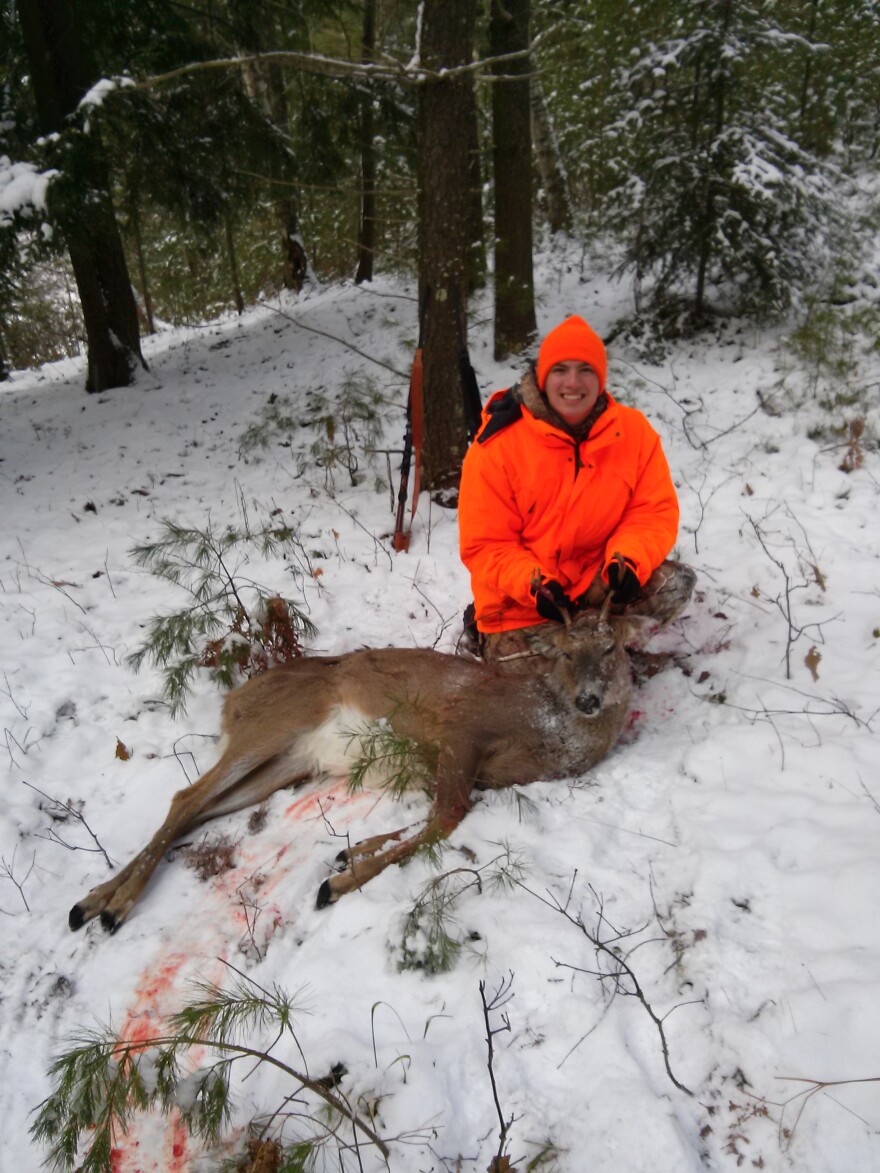For many the nine-day season is a cherished tradition. Tim Lizotte plays a roll in making the hunt happen. He's a DNR wildlife supervisor.
I meet him at the end of Frog Alley Road, just north of Mukwonago, at the edge of the Vernon Marsh State Wildlife Area.
“it’s a little over 4,000 acres. The area we’re walking into is actually a posted wildlife refuge that is closed to the public for the fall EXCEPT for the gun deer season,” Lizottee
Lizotte says hunters will soon flock here. It’s his job to help manage a safe, ethical deer harvest.
He says that means reminding hunters that at least 50 percent of their upper body must “blaze” orange. As far as he’s concerned, the more the better, “I typically wear a vest and then under that I typically wear an orange shirt’ and what’s equally important, is if you wear headgear it needs to be orange.”
Although it’s not a requirement, Lizotte wishes hunters who climb trees to spot prey, would invest in a safety harness, “unfortunately what happens every year is we have people who fall out of trees.”
Lizotte explains, you sling the gear over his shoulders and wraps it around both leg, “then affix it to the tree and that insures that if a gust of wind or a stand of breaks you won’t fall any more than two feet.”
As for firearms, Lizotte says hunters have options. He pulls out his UNLOADED semi-automatic, “it can hold five rounds, it’s a very safe – to reload, you work that bolt and that brings a new shell into the chamber.”
The DNR urges hunters to test their firearms PRE-season; and - if you were born after 1972 –requires them to complete a safety course.
“And if all hunters followed all of those rules we would have zero firearm accidents, unfortunately we’re not there,” Lizotte says.
Last season, the DNR reported eight injuries.

A long wooden box inside Lizotte’s truck reads “deer jaws”. He uses them to teach staff how to identify a harvested deer’s age.
"The wildlife staff actually go out during opening weekend and we sit at registration stations and as deer come in, by looking at the wear and replacement of their teeth, we’re able to determine how old they are and that information is fed into our population model.”
Lizotte says monitoring the age and sex of harvested animals, helps the state tweak harvest quotas, in order to maintain a healthy deer population.
Staff also estimates the impacts of snowfall and bone-chilling temperatures.
“Last year was one of our highest winter severity indexes of all time. For this year for example because of the extreme winter last year, most of the northern third of the state there is no antlerless harvest at all – no does, those seasons are going to be bucks only. Whereas in the southern farmland, which is where we are, there’s quite a liberal harvest because the population can sustain it,” Lizotte says.
As wolves have multiplied on Wisconsin’s landscape, some hunters worry that the predator is driving down the deer population. Lizotte points to other wildlife.
“Wolves are only one of several predators on deer, and in fact what we found is that black beers and coyotes on a population scale, have a much greater impact than wolves do on deer,” Lizotte says.
This hunting season DOES bring changes, after Governor Walker brought in a so-called deer czar to review management protocol.

One result, is that the DNR now manages hunting quotas and seasons, on a county-by-county basis, not via deer management zones. Each of the 72 counties now has its own volunteer advisory committee – including not only hunters but also farmers and conservation groups. They help shape the season.
Lizotte says the DNR is also offering hunters an e-registration system, “so a hunter will either be able to call it in or we have an app and they can register their deer that way.
Opening day, Tim Lizotte will be on duty a nearby deer registration station.
He plans to snatch his chance to hunt before season’s end, at an undisclosed location in Portage County, "when Thanksgiving time rolls around, I generally head up to spend time with friends at the shack and just reconnect and spend some time in the woods,” Lizotte says.
He believes deep down – camaraderie and escaping the everyday hubbub of life is the hunt’s greatest appeal.



